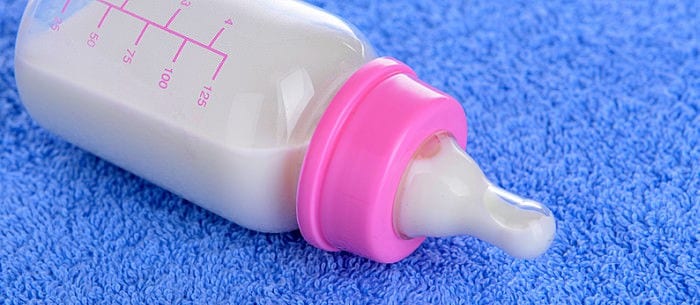Taking care of your newborn means making sure everything your baby touches is safe and clean, and learning to sterilize baby bottles is a big part of that. Hidden germs and bacteria may become trapped in the nipple, rings and other plastic parts. But if you master how to sterilize baby bottles, you’ll have peace of mind.
“Bottles, pacifiers, sippy cups and other feeding equipment should generally be sterilized the first time you use them,” recommends Dr. Lori Woodring, a child psychologist and mom of four. “Before the first feeding, you don’t know what’s on the bottle,” adds Dr. Jennifer Shu, an Atlanta-based pediatrician and co-author of “Heading Home With Your Newborn.” “If you don’t learn how to sterilize baby bottles, the germs that remain inside can multiply and possibly make your baby sick.”
Once you’ve sterilized your baby’s bottles at the outset, you probably won’t need to continue the practice. For typically developing babies, a one-time sterilization of all feeding equipment is enough for good health. If your water supply is clean — free of bacteria and other microbes — and safe to drink, you can wash bottles the way you would all your other dishes. “Keep in mind that well water should be tested first before using it to clean your baby’s bottles,” points out Dr. Woodring.
“After the first sterilization, it’s fine to wash baby bottles with hot soapy water or put them in the dishwasher,” says Dr. Shu. To actually sterilize the bottles, though, the dishwasher is not sufficient. If your machine has a sanitizing cycle, it’s ideal for cleaning bottles and feeding accessories. Use a basket for the smallest parts or the top rack of the dishwasher to prevent melting.
Here are a few other methods to familiarize yourself with as you learn about how to sterilize baby bottles:
- Conventional Sterilizing
This home method is probably the easiest and certainly the most affordable way to sterilize your baby’s bottles. “Simply submerge them in a pot of boiling water for five minutes,” explains Dr. Woodring. You can sterilize the bottle parts this way, too. After boiling, let bottles air dry on a clean kitchen towel or in a dish drainer.
- Electric Sterilizer
An electric device uses steam to clean the bottles and make sure they’re free from dirt and bacteria. “This kind of sterilizer is just as good as boiling the bottles yourself,” says Dr. Woodring. You won’t have to use the stove for this method, but you will need to find a spot on your kitchen counter to store it. Electric sterilizers usually have a compartment that accommodates bottle accessories, nipples and breast pump parts.
- Microwave Sterilizer
This product doesn’t need to be plugged in and won’t take up as much space in your kitchen as a larger electric sterilizer. A microwave sterilizer also uses steam and the power of this appliance to sanitize several bottles quickly and efficiently. This device works in most standard microwaves.
- Cold-Water Sterilizing
This method uses a non-toxic solution dissolved in plain tap water to sterilize bottles. The solution is made with either a liquid or tablet that you purchase, and then the bottles are submerged in a special container (or you can sterilize them in a large bucket or pan). Cold-water sterilizing cleans bottles as well as the other ways and is ideal if you’re traveling or you don’t have access to electricity.
Want more info on baby bottles? Check out Baby Bottle Basics to learn more.
Jennifer Kelly Geddes is a New York-based writer and editor who specializes in parenting, health and child development. She’s a frequent contributor to Care.com and the mom of two teen girls.






